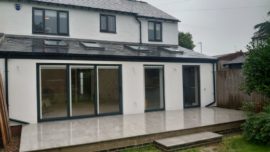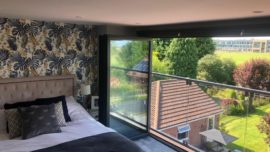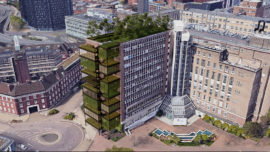
Loft conversions are a great way to expand your home, add value to your property, and generally increase your quality of life. If you’re going to get one for yourself, however, you need to know the different types of loft conversion that are available to you, and which one is going to be the best fit for you and your family if you choose them.
There are 4 main categories of loft conversion for you to add to your home. Each of them has the same benefit of adding the space and the value, but how they go about it, what they cost, and the effect that they’ll have on the aesthetic on your house and completely different entirely.
Let’s look through them.
Rooflight Loft Conversions
The first and arguably most common types of loft conversion that a lot of people tend to go for is the roof light loft conversion. This is essentially doing nothing more than converting the loft space you already have, and adding a skylight such as the classic Velux into the structure to let light in.
Rooflight loft conversions are usually the best choice for keeping a good amount of storage space in the loft through surrounding cupboards leading to the free space left in the roof. That’s a great feature if you need to space and also great for saving costs on less work to be done too. There’s less space to move around, but you will save time and money on the build as a result. It’s a big trade-off that needs a lot of long-term thought.
Advantages:
· Storage around the outside
· Lowest Cost
· Fastest Build
Disadvantages:
· Least Room
· Low Headspace
· Difficult Shape
Dormer Loft Conversions
A dormer loft conversion is probably the second most common type of loft conversion you’ll see in the UK. They use a pop-up like structure on one side of the roof to create a much higher space in the loft, while the other side is usually left to be the same as it would be with a roof light conversion.
The use of a dormer in your loft conversion has the added benefit of having a great amount of headroom which is perfect for taller people, or for if the room is going to be lived in like with bedrooms since it won’t feel cramped or closed off.
Advantages:
· Headroom
· Low Cost
· Half storage, half-height
Disadvantages:
· Aesthetic impact
· Storage sacrifice
· Added build time
Hip to Gable Loft Conversions
A hip to gable loft conversion is designed to lift one part of the roof to create a new wall. That means even more room than a dormer provides, as there’s a whole wall raised rather than one small section. It’s a great way to create purpose-built rooms like home cinemas, playrooms and again bedrooms too, while still keeping most of the space a dormer has.
The downsides to this type of loft conversion however come from the sacrifice that comes from making one. Mainly, with a structural alternation as large as a hip to gable, it’s much more likely you’ll need planning permission. On top of that, you’re also making large structural changes to your roof, increasing the cost again, and adding more time to the build.
Advantages
· Large space to use
· Increased property value
· Storage space kept intact
Disadvantages
· Much higher costs
· Planning permission may be required
· Higher build time
Mansard Loft Conversions
Finally, there are also mansard loft conversions. These are the biggest type of loft conversion possible, and they are incredible additions to your home that are practically the same as adding a whole new floor. They are formed by creating almost vertical walls at each side of the roof to raise the hight all round, creating a great space inside that can rival even master rooms, which is perfect for purposed rooms again like new bedrooms if required that can also accommodate living areas like kitchens and bathrooms providing the right regulations are still met.
As always, there’s still a downside to such a great addition to your home. As you can image, a loft conversion that is as grand as this is going to cost the most money by a long shot. It will take more time than the other loft conversion types too, and it also means you’re sacrificing your storage space pretty much all together unless you incorporate them into your design.
Remember still here too, with structural changes to your roof like this, planning permission is more than likely going to be needed.
Advantages
- New space almost the size of a floor
- Massive value increase
Disadvantages
- Massive cost implications
- Likely requiring planning permission
- Storage space sacrificed
- Longest build time
Conclusion
When it comes to making the final decision, always remember to weigh up your options carefully against what you need the newly converted space to do. Think about how the space you have will work with the purpose you need, how much storage you can sacrifice during the build, what your budget is, and how much hassle the build may be (although project management services exist for that very reason too).
Only you know what will best fit you and your family, but each of these options still creates a whole new world of space for you to utilise and can really give your property a new lease of life that can add a staggering 25% to the property value when it comes to reselling.
For more information on anything we’ve looked at here, contact the CK Architectural team today. We’re always happy to offer free and impartial advice, and, as expert architectural designers, we can help you find your perfect project in no time.





0 comments
Write a comment